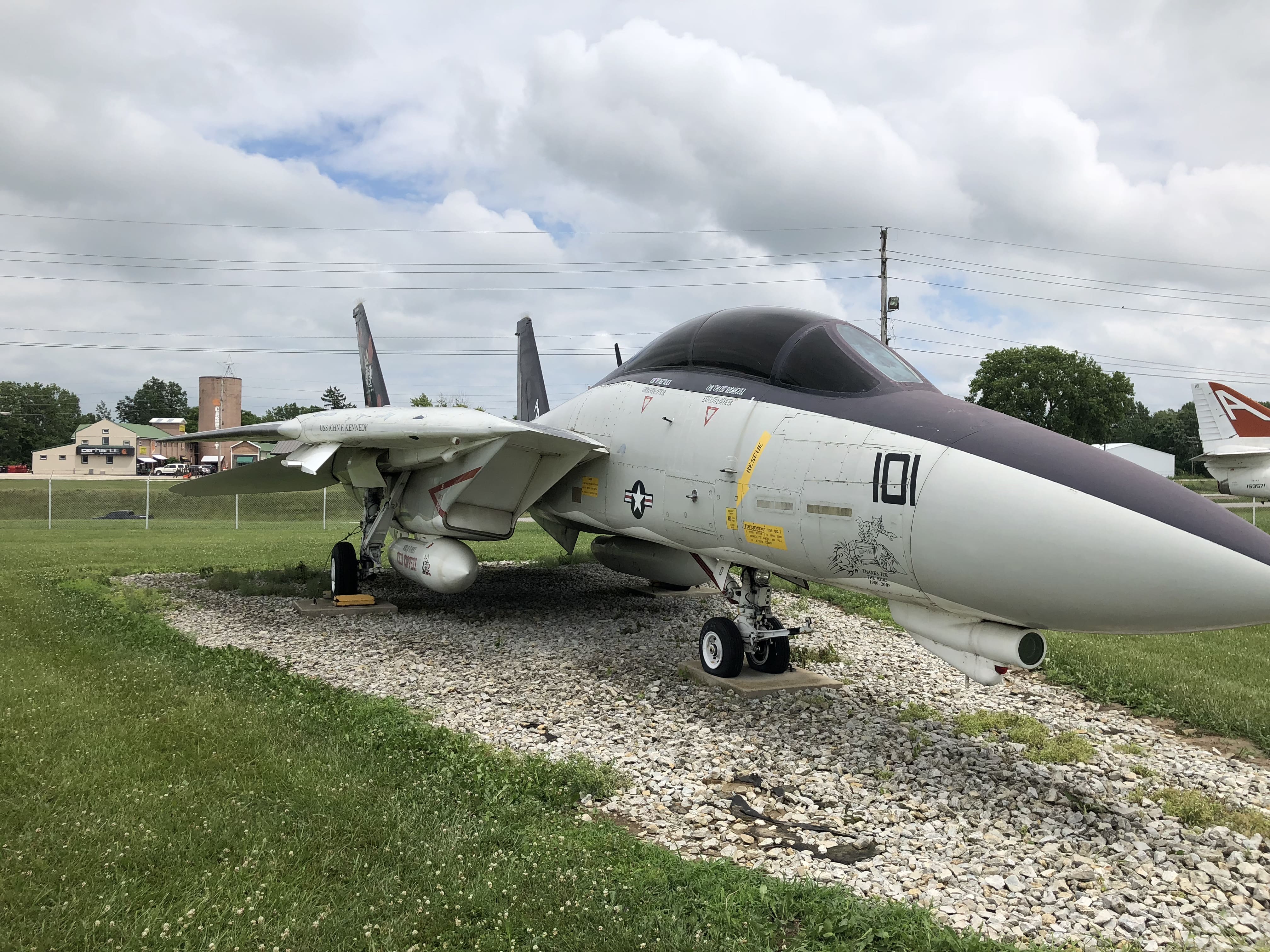GRUMMAN F-14B TOMCAT

On January 14, 1969, the Navy announced the award of the contract for the VFX fighter, now designated F-14, to Grumman. The Navy bought 583 F-14As through 1988 and procured 55 F-14Ds (a new model) over the five-year period from 1988 to 1992. Consistent with its capability, the F-14D is expensive, with a projected average unit price tag of about $74 million [1988 dollars].
When it launches off the deck of an aircraft carrier, it is the most feared fighter in the sky. The roar of it’s engine is unforgettable. It is the most storied aircraft in the world today, a veteran of countless sorties in peacetime and conflict, and popularized in novels and on the silver screen. It is the F-14B Tomcat, and it is the backbone of naval aviation.
The F-14 Tomcat is a supersonic, twin-engine, variable sweep wing, two-place fighter designed to attack and destroy enemy aircraft at night and in all weather conditions. The F-14 can track up to 24 targets simultaneously with its advanced weapons control system and attack six with Phoenix AIM-54A missiles while continuing to scan the airspace. The Tomcat is the only U.S. plane capable of carrying the long-range Phoenix missile, which can fire at targets from distances of about 80 miles. Armament also includes a mix of other air intercept missiles, rockets and bombs.
Manufactured by Grumman Aircraft Corporation, the F-14 employs variable geometry wings to optimize aircraft performance throughout the flight envelope. The F-14 swing-wing could be manually controlled by the pilot or shifted automatically according to the plane’s speed. It moved forward to allow the plane to land on tiny aircraft carrier decks at relatively low speeds and backward as the plane dashed out to intercept Soviet bombers. The multiple tasks of navigation, target acquisition, electronic counter measures (ECM), and weapons firing are divided between the pilot and the radar intercept officer (RIO).
When the F-14 Tomcat thunders off the aircraft carrier’s deck into the sky, its wings automatically sweeping back to a 60-degree angle as the two afterburning turbofan engines each kick out 27,000 pounds of thrust, propelling the fighter at more than twice the speed of sound. Inside the wings and fuselage, five internal fuel tanks must securely hold up to 9,000 liters of highly volatile jet fuel under extremes of temperature, vibration, high G forces and other adverse conditions. If a sufficiently large leak in the fuel system should occur near a heat source, there could be disastrous consequences.
Overall, the Navy’s Grumman F-14 Tomcat is without equal among today’s Free World fighters. Six long-range AIM-54A Phoenix missiles can be guided against six separate threat aircraft at long range by the F-14’s AWG-9 weapons control system. For medium-range combat, Sparrow missiles are carried; Sidewinders and a 20mm are available for dogfighting. In the latter role, the Tomcat’s variable-sweep wings give the F-14 a combat maneuvering capability that could not have been achieved with a “standard” fixed planform wing.
| SPECIFICATIONS | |
| Span: | 64 feet unswept, 38 feet swept |
| Length: | 61 feet 9 inches |
| Height: | 16 feet |
| Weight: | 42,000 lb – Empty 61,000 lb – Loaded 72,900 pounds – Maximum Takeoff Weight |
| Armament: |
Up to 13,000 pounds of: Air-to-Air Missiles (up to) Air-to-Ground ordnance one MK-61A1 Vulcan 20mm cannon The Tactical Airborne Reconnaissance Pod System (TARPS) |
| Engines: | 2 General Electric F-110-GE-400 augmented turbofan engines with afterburners producing 27,000 pounds of thrust per engine |
| Crew: | Two: pilot and radar intercept officer |
| Cost: | $ 38 million |
| Tail Number: | 162912 |
| Years in Service: | 1988 – 2005 (This Aircraft) |
| F-14 Service Period: | 1974 – 22 September 2006 |
| PERFORMANCE | |
| Maximum Speed: | Mach 2.34, 1,544 mph at high altitude |
| Cruising Speed: | Mach .72, 550 mph at sea level |
| Range: | 1,842 miles |
| Service Ceiling: | + 53,000 feet |